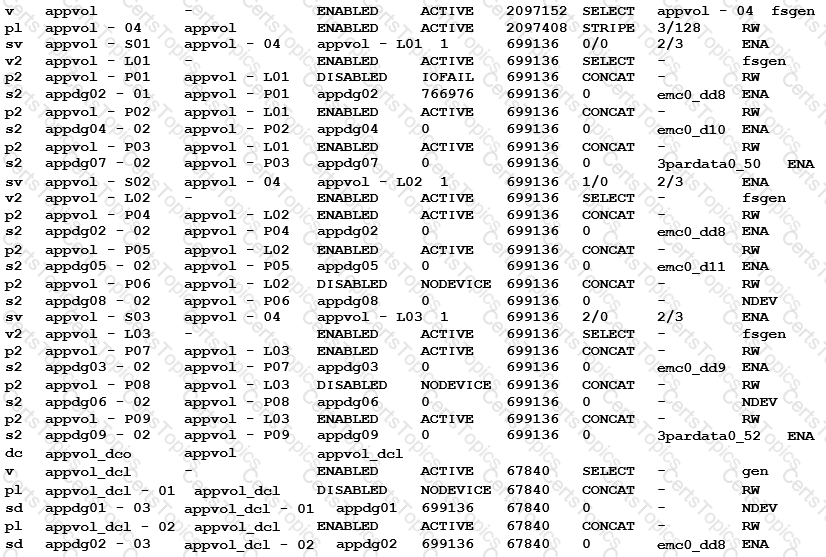Given the following command:
vxassist -g datadg make datavol 10g layout=stripe !ctrl:c2
Which instruction does the !ctrl:c2 attribute prompt Volume Manager to follow?
What is the advantage of making storage checkpoints automatically accessible through a directory named .checkpoint in the root of the file system?
The concatenated mirrored volume called appvol in appdg has 200MB and is mounted to /app as a Veritas file system. An administrator needs to expand the file system and volume by adding 100MB, but expanded only the volume using the following command.
# vxassist -g appdg growby appvol 100M
Which command should the administrator perform next to expand the file system, without changing the volume size?
Portions of the same disk group were imported onto several systems at the same time resulting in conflicting configuration copies.
Which command should be used to resolve the conflict?
Which daemon performs thin reclamation asynchronously?
Refer to the exhibit.

The appvol volume contains a file system and is mounted to /app. The volume has experienced multiple disk failures.
What is the state of the data on the mounted file system?
What is the function of a Veritas file system intent log?
Which object is stored in the private region of a Veritas Volume Manager disk?
The disk group appdg is imported onto host01 using the vxdg -t import appdg command. Volumes have been started and file systems mounted. The system is then gracefully rebooted.
What happens to the appdg disk group after host01 has restarted?
Which log type can be enabled to track the changed regions of a volume due to I/O writes to a mirrored volume?
Which two Veritas Volume Manager commands can an administrator use to print statistical information on one or more disks? (Choose two.)
How does an administrator create and mount a Veritas cluster file system?